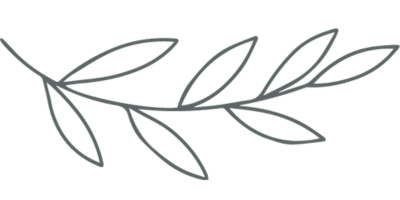What goes in the recycling bin?
Have you ever stood for longer than you wanted to next to the recycling bin, plastic pot in one hand, and scrutinised the symbol wondering whether on earth it’s recyclable or not? If so, welcome to plastic paralysis - the fear of putting single-use plastic in the wrong receptacle. It’s up there with wishcycling when we just put it in anyway hoping for the best. Here’s our guide to why we are where we are with plastic pollution as well as a handy graph of what goes in the recycling bin.
The UK, for all its charm, is home to a surprising statistic. After the United States, it’s earned silver as the second biggest creator of plastic waste per capita in the world. According to DEFRA (Department for Environment Food and Rural Affairs), England alone uses 2.7 billion items of single-use cutlery each year, equivalent to circling the world over eight and a half times. Only about 10% of which ever gets recycled.
But while the bad news is that we have a serious plastic problem in this country, the better news is that the government is beginning to tackle it.
From October 2023, it’s banning single-use plastic plates, cutlery and trays across England as part of a larger global plan to put an end to plastic pollution. Watch this space for a broader international plan of action on plastic pollution by the end of 2024.
Notpla pioneering products use seaweed and plants - how cool is that?
Are bioplastics the solution?
Not yet unfortunately. Right now the idea that we can use bioplastics and dispose of them anywhere since they’ll safely disappear isn’t true. Many bioplastics still contain a sizeable percentage of traditional plastics, for example Coca-Cola’s ‘PlantBottle’ which is made of 30% sugar cane and 70% oil-based plastic. While a step in the right direction, the research into bioplastics is simply not able to keep up with the pace of plastic consumption.
Still the market is reacting. Notpla is a stand-out example of innovation in the fight against plastic pollution. The winner of the 2022 Earthshot prize, Notpla’s bioplastic is made from seaweed and plants. Their packaging products, like edible water capsules and compostable sachets, are pushing the boundaries of eco-friendly, flexible packaging.
The Refillable Revolution
One way to opt out of the headache of what to put in the recycle bin is to swap to refillables. We all know about reusable water bottles, bamboo toothbrushes, and stylish cloth shopping bags, but there is now an eco-system of brands out there that offer refillable bathroom products, beauty products and pantry staples. Check out our blog, 5 of our Favourite Refillable Companies.
Our handy guide to plastic recycling
Ever wondered about the secret language of recycling symbols? Yes, we have too. So here’s our handy guide to what goes where in the recycling system. As a general rule of thumb, even though it has the recycling symbol, it’s not necessarily recyclable. Look for the numbers in the middle of the symbol: the lower the number, the more likely it is you’ll be able to recycle it - but not always! Is it any wonder our recycling rates are so low in this country?
Check your recycling symbols above to find out what to do!
Check your local recycling collections here.
All those flexible bits of plastic, e.g., film, salad bags, sweet wrappers, pet food pouches, etc., although still widely unaccepted in your council collected bin, are recyclable at some supermarkets, like Tesco, Sainsbury’s, and Co-op.
If you’re still unsure about whether your item is recyclable, have a look at TerraCycle, an innovative company that specialises in finding solutions for hard-to-recycle waste. They’ve developed specialised recycling techniques and process to handle challenging waste items such as plastic bottles, cigarette butts, coffee capsules, and even diapers and chewing gum.
In this video, our founder Lucy shows you how Terracycle’s latest specialist recycling system works, and discusses the cost of it.
Which takes us to the reality that until the fossil fuel industry shrinks, plastic is likely to be the cheapest option for brands - and as consumers our most powerful solution to reduce it is to swap to refillables where we can.
You can find lots of refillable choices on our Directory of planet-friendly brands.



